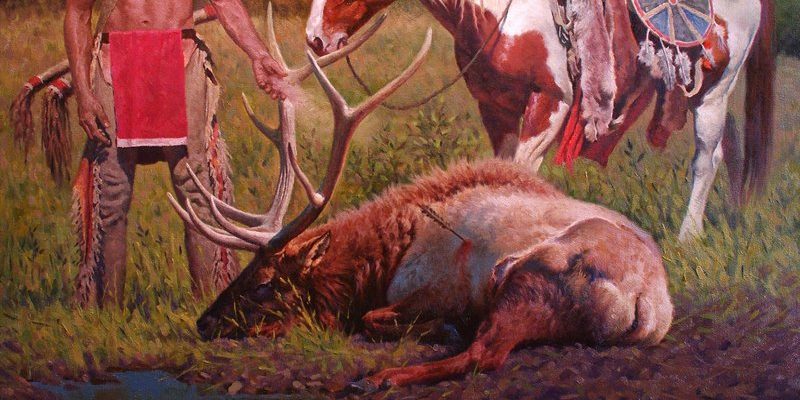
Imagine sitting around a campfire, sharing stories about the wild and the animals that inhabit it. The wapiti often finds its way into these tales, symbolizing strength, grace, and the unyielding spirit of the wilderness. In some cultures, they’re seen as messengers or embodiments of certain values. Understanding how the wapiti is represented in culture and folklore not only deepens our appreciation for this incredible animal but also connects us to the broader narratives that define human experiences with nature.
The Wapiti in Indigenous Cultures
Indigenous cultures across North America have long revered the wapiti, integrating it into their spiritual and everyday lives. For many tribes, the wapiti is more than just a source of food; it represents a connection to the land and the cycles of life. For instance, the Lakota Sioux view the wapiti as a symbol of strength and leadership. They believe that the wapiti’s ability to thrive in harsh conditions reflects resilience—a quality admired in their communities.
During ceremonial events, wapiti are often celebrated through dances, songs, and art. These traditions not only honor the animal but also promote communal bonding and respect for nature. You might encounter stories where the wapiti plays a central role in creation myths, serving as a bridge between the mortal realm and the spirit world. This deep-rooted connection emphasizes the importance of harmony with nature and the lessons we can learn from observing wild animals.
The Wapiti in Folklore and Myths
Throughout various cultures, mythologies involving the wapiti often highlight its majestic nature and innate wisdom. In some Native American folklore, the wapiti is depicted as a wise guide or protector. Stories may describe how the wapiti leads lost travelers to safety, reminding us of the importance of listening to nature and trusting our instincts.
Moreover, in European folklore, the wapiti sometimes represents nobility and the untamed spirit of the wilderness. You might hear tales of great hunts and the valor needed to respect such a majestic creature. These stories often serve as moral lessons, teaching the viewer about respect for life, courage, and the consequences of greed. They remind us that while humans may seek dominance over nature, true wisdom lies in understanding our place within it.
Artistic Representations of the Wapiti
The wapiti’s striking features have inspired countless artists throughout history. From ancient cave paintings to modern sculptures, the wapiti has been a muse for creativity. Artists often depict the animal in vibrant natural settings, emphasizing its grace and beauty.
In recent years, you might have noticed ceramic artworks or wood carvings that showcase the wapiti’s powerful antlers and muscular form. These artistic representations not only celebrate the animal but also serve as reminders of the wild landscapes they inhabit. Through their work, artists capture the essence of the wapiti, inviting viewers to reflect on their relationship with nature and the environment.
The Wapiti in Literature
Literature often mirrors society’s fascination with wildlife, and the wapiti is no exception. In many novels and poems, the wapiti symbolizes freedom, strength, and the untamed spirit of the wild. Authors have used the wapiti as a character or an emblem throughout various stories, illustrating the beauty of living in sync with nature.
For instance, in some adventure novels set in rugged landscapes, the wapiti might appear as a guide, leading characters through challenging terrains. Its presence serves as a reminder of the great outdoors and the adventures that await those willing to explore. Through these narratives, readers are encouraged to appreciate wildlife, fostering a deeper sense of connection to the natural world around them.
The Wapiti’s Role in Eco-Tourism and Conservation
As people increasingly turn to eco-tourism, the wapiti plays a vital role in this movement. Wildlife watching, especially observing wapiti in their natural habitats, has become a popular activity in many national parks. This interaction not only enhances our understanding of these magnificent animals but also fosters awareness about conservation efforts.
Organizations dedicated to preserving wapiti habitats often share stories of their importance in the ecosystem. For example, wapiti help maintain the health of grasslands through their grazing habits, promoting biodiversity. By sharing these narratives, conservation groups inspire individuals to take action and support local ecosystems, ensuring that future generations can experience the awe of watching wapiti in the wild.
The wapiti is more than just an impressive animal; it’s a symbol of resilience, strength, and connection to nature. Through folklore, art, and literature, this majestic creature has found its way into the hearts and minds of many cultures. As we learn about the wapiti’s representations, we also reflect on our relationship with the natural world and our responsibility to protect it.
Whether you’re an outdoor enthusiast or just someone curious about nature, the stories surrounding the wapiti offer valuable insights. They remind us that every animal has a unique role in our shared ecosystem. So, the next time you think of the wapiti, consider not just its beauty, but also the deeper cultural connections and lessons it imparts. By celebrating the wapiti, we honor the rich tapestry of life that connects us all.

